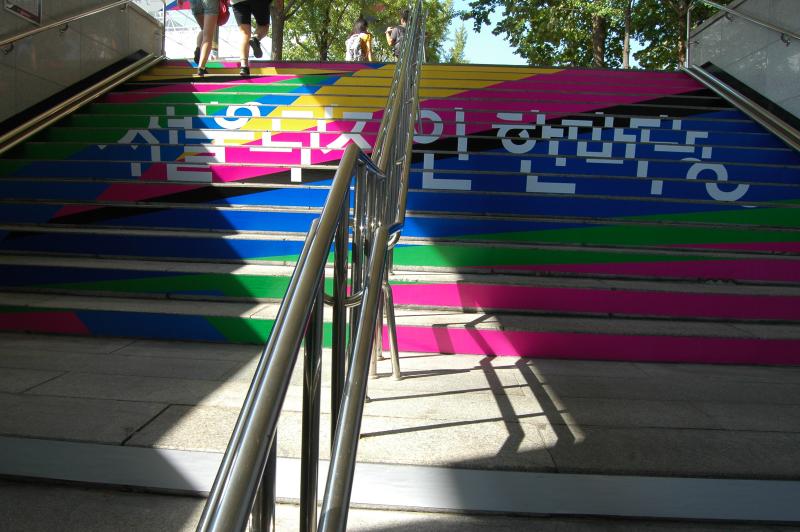
The classic color scheme returns - it's time for the Seoul Design Fair once again. Open until October 7th, this three-week-long festival emphasizes design and creativity at every turn. Called the
Seoul Design Olympiad last year, the name changed due to some questions by the better-known holders of the Olympic name. While it's worth an afternoon to inspire the creative souls, the issue of being overwhelmed by the scope of the festival continued for the third year in a row. It's possible to
see it all in a day, but
comprehending it and taking in the sights and sounds is a different thing altogether.
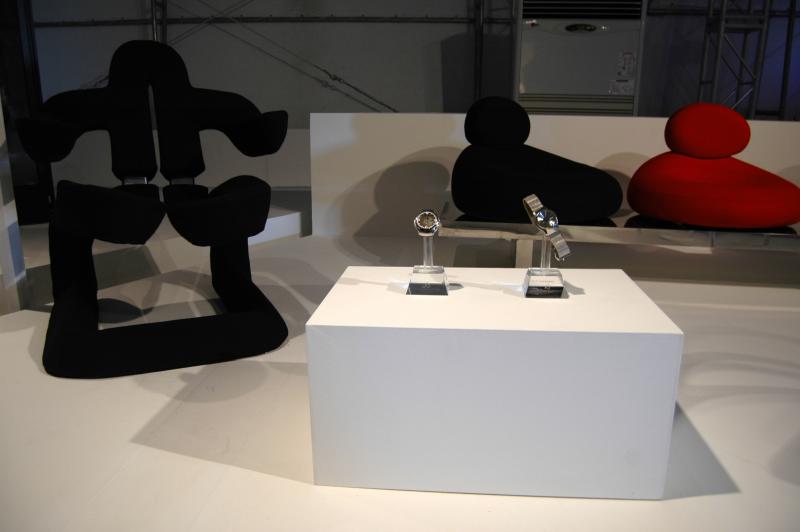
The first exhibit, "Living Culture in Korea, China, Japan", displays a number of different designs hailing from these respective countries. The chair, part of the 'shun' series by Shi Zhenyu, seeks a harmony between man and nature by "combining the solemnity of man with the tranquility of nature in an office environment".
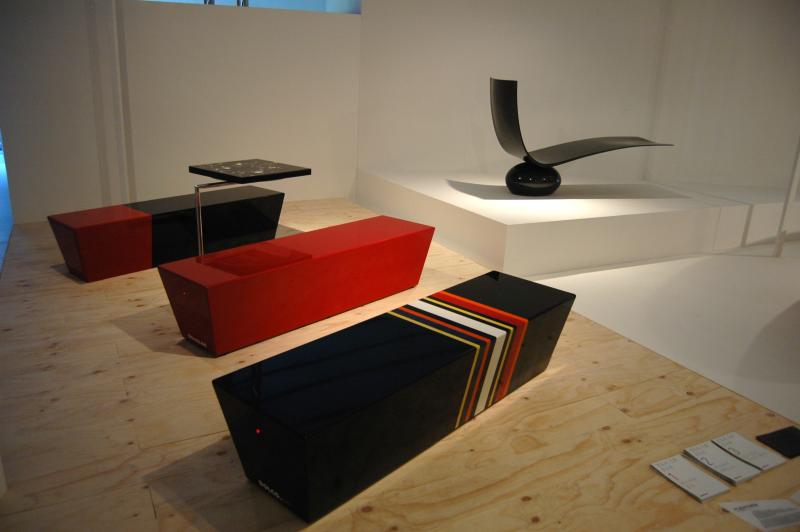
Some Korean displays hoping to warm you up by using a warm stripe design. By Solco Biomedical.

Don't eat from these bowls - and don't touch them either.

The second large tent on the track displays the "Seoul Brands Design Exhibition" and the "Seoul Design Assets Exhibition" - two areas, where Seoul and/or Korea are the distinctive elements here. Or so they'd like you to think.

An interesting combination of traditional and new-fangled -한양 목가구 or Hanyang Mokgagu. Take traditional "self-restrained Confucian aesthetics" and add in a fancy display (details not given) to create something entirely new. Not pictured just around the corner was a miniature version of Sungnyemun / Namdaemun, the southern gate of Joseon Dynasty Seoul.
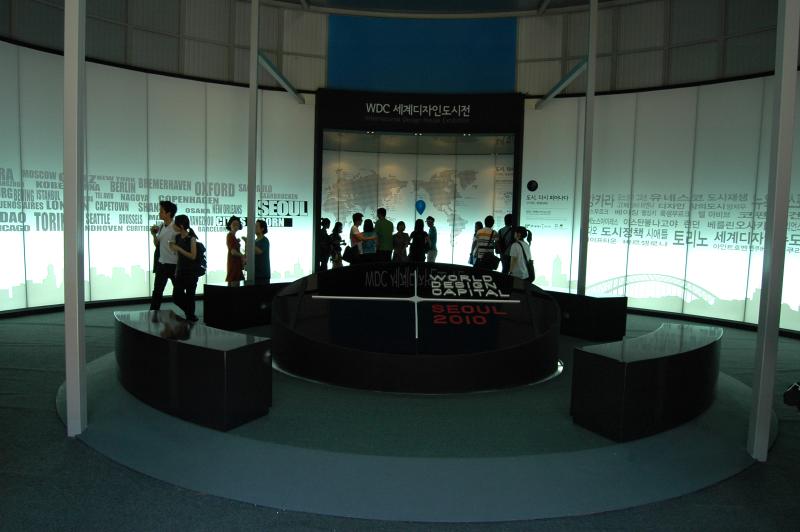
Probably the most interesting display (if you took the time to understand it) was in the third large tent. Under the theme of Urban Design and Management, video displays showed how over 20 cities were being reborn through new policies, new buildings, or new projects.
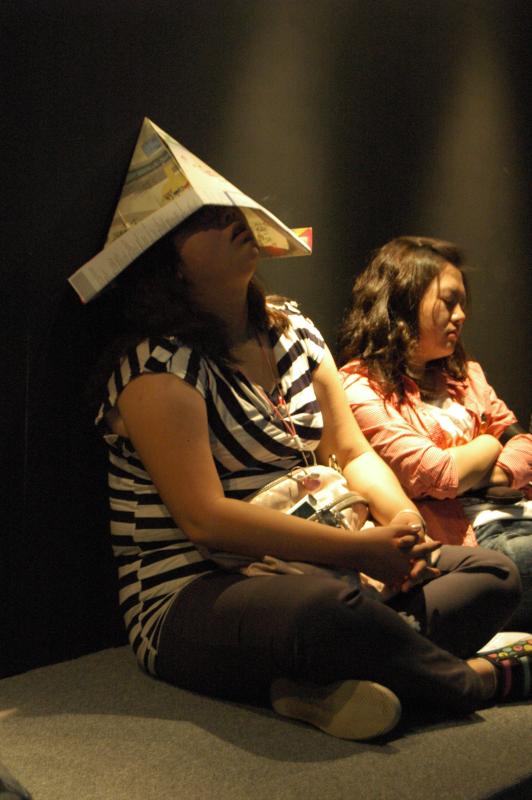
The best use for the awkward and oversized map I've seen yet. While there was plenty to see, it was also one of the only places to sit down and rest your overworked feet.
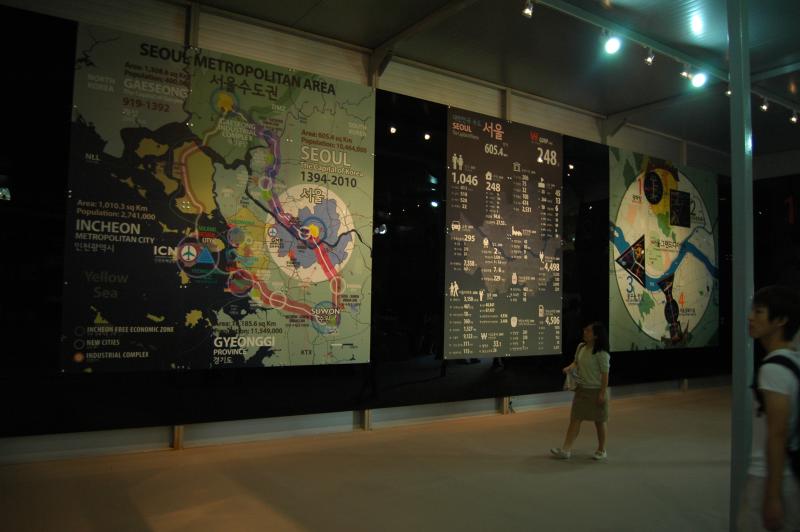
This is the
Seoul Design Fair, of course - lest any of you think the home team gave too much space to other cities, this area would prove you wrong. Each of these
huge panels seemed to cram on as many oversized words as their frames would allow. A number of other panels described future plans to build the Han River Arena and this architect's wet dream:

Presenting the Grand Lighting Tower, or 광화탑 as it was described in Korean. At over 100 meters tall, this proposed building would be situated in the Gwanghwamun Plaza area of downtown Seoul, totally outclassing the Admiral Yi Sun Shin statue already there. Although compared to the Eiffel Tower (the symbol of Paris), somehow I doubt the masses of tourists would come to see this behemoth.

One highlight: a recycled plastic 'bed' that would easily be sturdy enough for the honeymooners. It has the look of being a natural product, but being plastic makes it easier to care for.

Moving into the covered ring of the Jamsil Sports Complex, we find the Seoul Design Market. It was the "World Design Market-Seoul" last year, but this year, the branding-gone-overboard mindset seems to have taken over. It doesn't seem to matter that a fair percentage of the vendors are not from Seoul, but whatever. Plenty of interesting and creative stuff is here to see - and because some of the non-Korean vendors speak English, it's a fun place to chat with fellow foreigners about Korea.

Although the picture isn't the best, the awards for best bicycle design, cycle fashion and accessories, and infrastructure were all on display. The bikes had some small prototypes, while most of the rest were ideas on boards. Some were clever enough that I'd buy one (a convertible-style 'roof' for your seat, protecting it from the rain) while I'm surprised others won an award (a bike lock that looks like ivy).

The BFF acronym notwithstanding, the Bicycle Film Festival is indeed real, featuring films about people and their bikes.
Getting outside again, we found a large area dedicated to children:

All designed by children. Not pictured in the area were the 'Braille Business Card Design Class' and an 'Upcycling Class' - using recycled materials to create something of value or use.
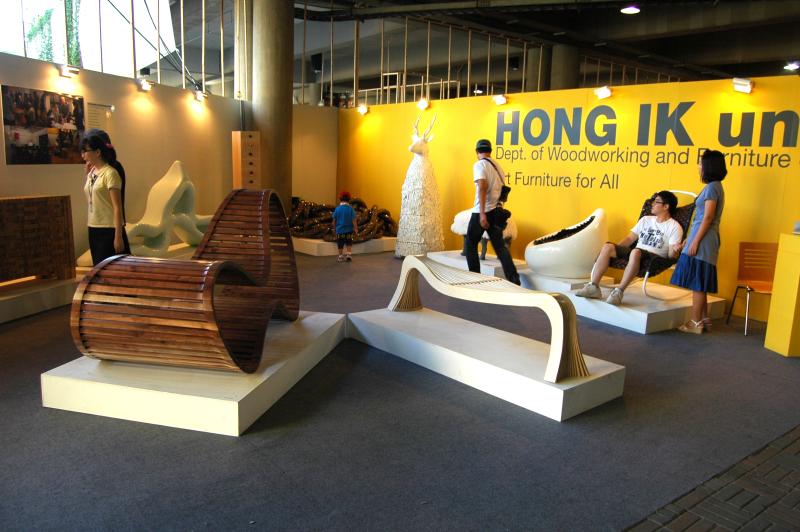
Back inside is a large area for colleges and universities to brag about their students' unique designs. Hongik University may be better known as an arts school and party zone, but their Woodworking and Furniture Department makes a pretty cool wooden chair.
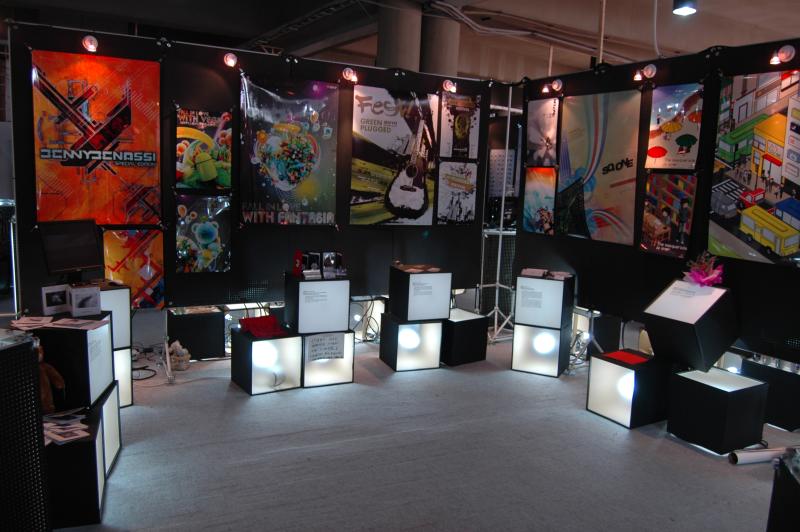
A collection of graphic designs in poster form from Handong University. Colorful and fun.

The last major section is the Food Design Fair. We'll assume that it's fake food (using real food for a three-week festival =
really bad-looking food by the end of it), but we didn't understand the idea of using plastic wrap when the display is already well-sheltered. Plenty of different food designs available for those who appreciate how the food looks more than how it tastes.
There's no right or wrong way around this facility, although the oversized / awkward map does give you a few vague options based on the amount of time you have available. For next year, something as simple as lines on the ground indicating directions would be great - follow the red line for the short path, the white line for the medium path, the blue line for the see-everything path, and so on. Alternatively, divide things into more discrete modules or departments. Things run together too easily; after two hours you're either bewildered at what you've seen or wondering what you've missed. Convenience facilities are located on either end, understandably far away to prevent damage to the displays, but require a trek to reach. While you can purchase high-markup coffee easily, a 500ml bottle of Coke was nowhere to be acquired.
If you're a fellow creative soul, you'll appreciate seeing other people's creativity at play. This event may well be as refreshing as going to an open-mic night, or as inspiring as buying a book on design. Even if you claim to not have a creative bone in your body, it's still worth attending for the cosmopolitan, 'World's Fair' feel to it. Give it the full day, or consider breaking your visit up into two parts. Your feet will thank you later.
Ratings (out of 5 taeguks):
Ease to arrive:

Foreigner-friendly:

Convenience facilities:

Worth the visit:

Directions to the Seoul Design Fair: Take line 2 of the Seoul subway system to the Sports Complex station. Take exit 6 or 7 to street level and walk straight for 300 meters. Open 10am-7pm Monday-Thursday, 10am-8pm Friday-Sunday. The event ends October 7th, 2010. Free admission; for more information, see the official website at sdf.seoul.go.kr.
 © Chris Backe - 2010
© Chris Backe - 2010
This post was originally published on my blog,Chris in South Korea. If you are reading this on another website and there is no linkback or credit given, you are reading an UNAUTHORIZED FEED.







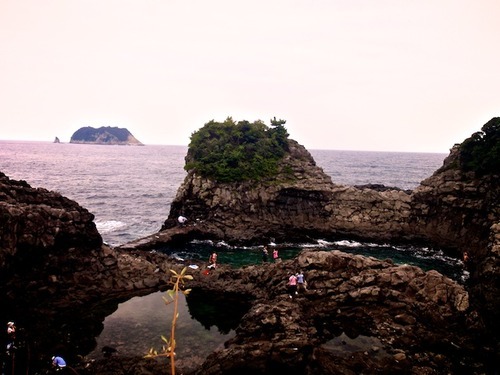
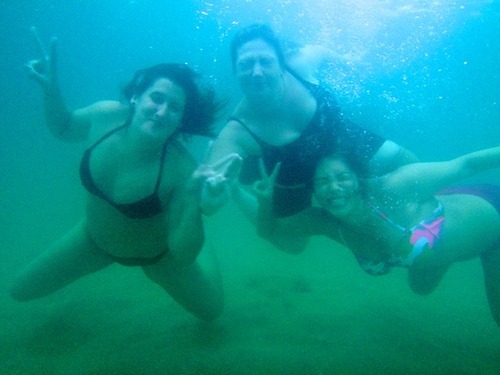












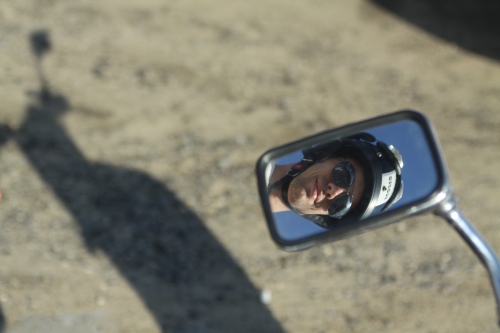





































 RSS Feed
RSS Feed
Recent comments